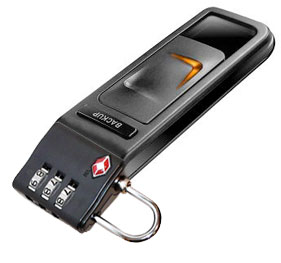
The news of a policeman losing a USB flash drive filled with the contact information of police informants shows the importance of protecting your data from prying eyes. With just a few steps, the police department could have locked down the information with one of several products on the market today.
The reason USB flash drives have become so popular in the marketplace today is their large storage capacity combined with their small size. Unfortunately, their small size means they can be easily misplaced or lost. In the case of the policeman, he had left the drive on the top of his car as he prepared to start his shift and drove off with it still there.
While you may not be carrying around the identities of informants, you may want to still protect your data, particularly if your drive contains passwords, backups of your bank records or any other sensitive information.
Many USB drives these days come with some measure of password and encryption built in. But if yours doesn’t have these features, here are some things you can do to keep your data from being viewed by others.
If you just want to keep individual files inaccessible, you can usually do that in the program you used to create it. For example, in programs such as Word and Excel you simply need to go to the Tools menu. Click on Options and then the Security tab. It will then give you the option to enter a password and then confirm it. That’s it. Just be sure you remember your password or you’ll have to get another program to recover it.
If you partition your USB flash drive into partitioned volumes, you can some password protect some files and not others using Cypherix LE. It can create its own vaults containing up to 25 MB each. Pretty handy, as long as you’re not trying to protect an Access database or other large file with it. It is free, however, something the products below can’t claim.
Folder Lock allows you to password protect your USB flash drive, external drives or memory cards. A benefit of this program is you can open the files without installing the program on the computer you’re using. This can be a real bonus if you’re using the flash drive to move files between your home computer and the one at work. A lot of companies don’t let you install software on their computers.
Folder Lock gives you a lot of choices. You can lock individual files, folders or the entire drive and you can use its encrypt feature to protect your USB drives, CDs and notebook too.
When you need to access your drive data, you simply plug in your USB flash drive into any computer where Folder Lock is already installed or use the AutoPlay feature. Double click on the Locker you want to access and enter the password.
The best program out there for locking down your USB drive data is Securestix. It runs on all versions of Windows and you can easily set up the security system for your USB flash drives.
It uses AES-128 encryption technology, which is pretty high-powered encryption. If you do lose your flash drive, at least you know that no one is going to gain access to the files on it.
In fact, the program not only locks your files, but also hides them from view. Anyone looking at the drive wouldn’t even see them, unless they had the software installed. Even then, they would need the password. And if you’ve forgotten your password, you can always use the Hint feature to remember it.
If you’re not sure which product you like best, you can usually download a lite version that either offers a limited time trial period or has certain features disabled. This lets you work with the password protection schemes and features until you find the product that works best for you.
Several of the products noted work on USB flash drives as well as computer hard drives and peripherals. If you need to protect your data all the way around, these may be the best option for you since you don’t have to learn different password protection and encryption protocols for every system you work with.
The important thing to remember is that you want to protect your data. While you may think the day will never come when you leave your USB flash drive at Starbucks or lose it through a whole in your pocket, that day can come… often sooner than you think. At least if it goes missing, password protection of the data will give you some peace of mind that the drive is virtually useless to anyone who happens upon it.
